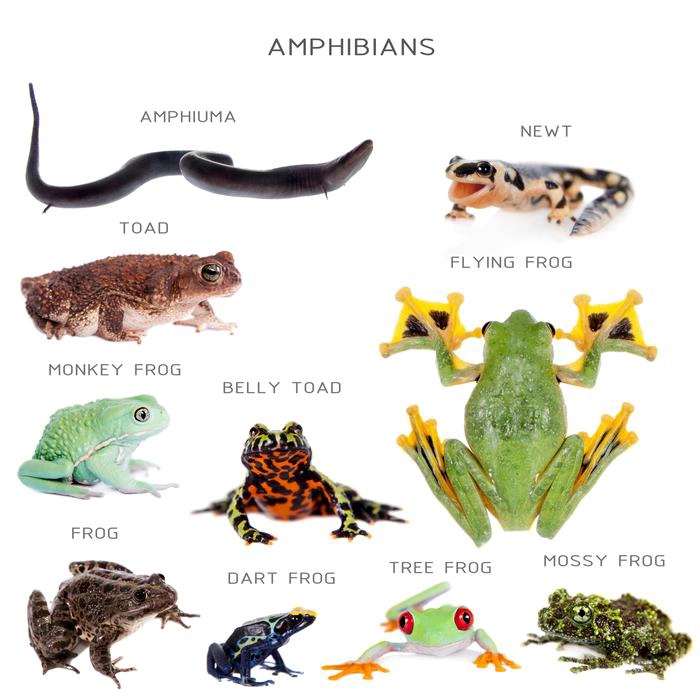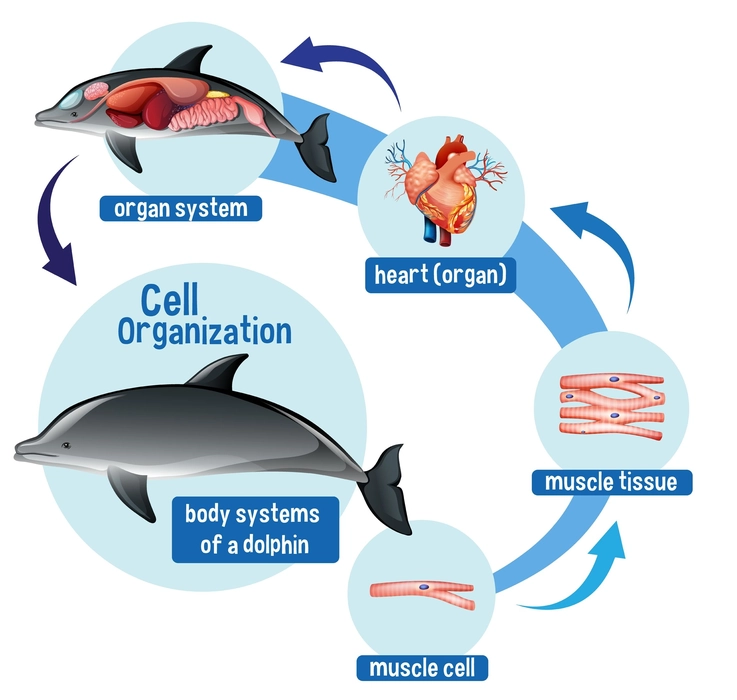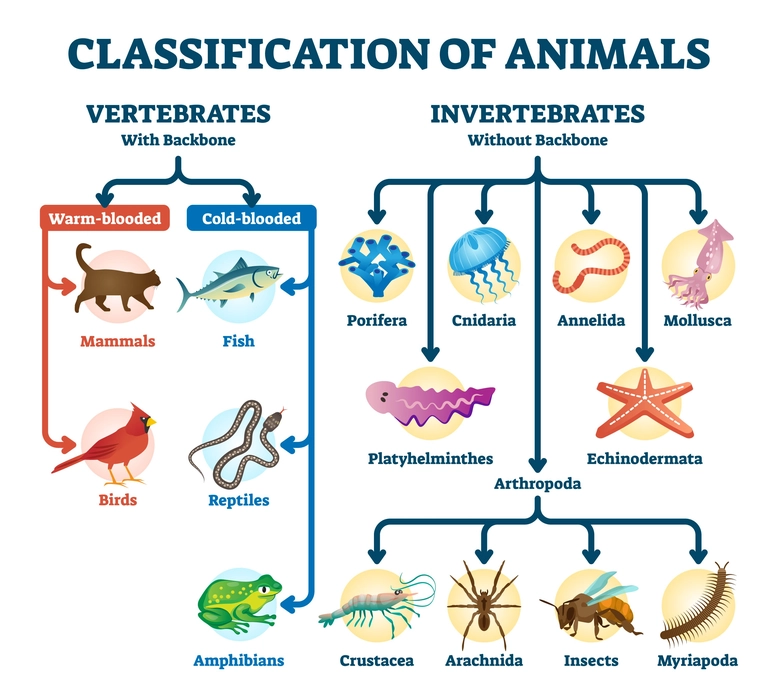Introduction
Mammals, fish, amphibians, birds, and reptiles are among the five classes into which animals are divided. Each one of them needs the environment to survive, including air, food, water, and shelter. The only vertebrates that live part of their lives in water and part on land are amphibians. As a result, they differ from other animal species. An amphibian is a tiny vertebrate organism that requires water or a moist environment to exist. As amphibian’s body temperatures are influenced by their surroundings and they can thrive in both terrestrial and aquatic habitats, they are also referred to as cold-blooded vertebrates. Frogs, toads, newts, caecilians, and salamanders are amphibians.
Characteristics of Class Amphibia
Body
- Amphibian bodies are separated into the head, trunk, and tail. Few amphibians just have a head and a tail (frogs). The neck can be absent or present.
- Some amphibians are limbless, while others have two sets of pentadactyl limbs.
- The skin is smooth, moist, scale-free, and abundant with mucous glands.
Sense organs
- Amphibians have two olfactory lobes that are responsible for their ability to smell.
- Eyes are well developed.
- Although they lack an external ear, the tympanum shields their middle ear.
Digestive system
- Amphibians have digestive systems that include the mouth, oesophagus, stomach, and intestine closing in a division called the cloaca.
- Cloaca participates in the digestive, excretory, and reproductive systems.
Circulatory system
- Amphibians have a closed circulatory system.
- They have three-chambered hearts, that are made up of two auricles and one ventricle.
- There are two circulatory paths; one is for the oxygenation of the blood through the lungs and skin and another route is to carry oxygen to the remaining parts of the body.
- However, there is incomplete double circulation because the oxygenated blood obtained in the left atrium and the deoxygenated blood received in the right atrium mix very slightly.
Diet
- Invertebrates like bloodworms, mealworms, earthworms, snails, slugs, locusts, and other creatures are eaten by amphibians. Larger amphibians can also consume small mammals.
- Young frogs require food most days of the week, whereas adult frogs only require it every two to three days.
Excretory system
- Amphibians have mesonephric kidneys during the adult stage and have pronephric kidneys at the larval stage.
- When on land, they expel the majority of their metabolic waste as ammonia (in tail form) and urea (in tailless forms).
- Kidneys are the primary excretory organ of amphibians.
Reproduction
- Amphibians can be fertilized internally (by a salamander) or externally (by most amphibians).
- They attract their mates by making various sounds; for instance, the loud croaking of frogs may be a signal for mates.
- Since the eggs don’t have shells and get dry when kept on land, the eggs must be laid in freshwater.

Classification of Amphibia
Based on their order, amphibians can be divided into three groups they are-
Apoda (Gymnophiona or Caecilia)
- The body is elongated and can be differentiated into the head and trunk.
- They do not have limbs and hence resemble earthworms.
- They have small dermal scales
- As their eyes are covered by bone or skin, they are known as blind worms.
- They lack tails or may have short tails.
- Internal fertilization takes place.
- Eg-Caecilians
Urodela (Caudata)
- The body is long and differentiated into a head, neck, tail, and four limbs which are of similar length.
- Their skin is smooth and moist.
- Through their skin, they breathe.
- At both the larval and adult stages, they have teeth in their jaws.
- They are incapable of making sounds.
- They undergo fertilization either internally or externally.
- Examples-Newts and Salamanders
Anura (Salientia)
- The body is differentiated into the head and trunk. But both of them are fused.
- They have four limbs that are designed specifically for jumping.
- Their mouth is large.
- At the larval stage, the tail is present and the adult tail is absent.
- Due to the presence of a chemical called magainin, the skin secretions of anurans have a naturally occurring antibiotic effect.
- In anurans, external fertilization takes place.
- Examples: Toads and frogs
Scientific Classification of Amphibia
The scientific classification of amphibians is as follows-
| Domain | Eukaryote |
Kingdom | Animalia |
Phylum | Chordata |
Subphylum | Vertebrata |
Class | Amphibia |
Order | Urodela Apoda |
Summary
Cold-blooded creatures called amphibians descended from lobe-finned fish. When they are larvae, they can survive in water, but as adults, they must live on land. Frogs, toads, salamanders, newts, and caecilians are some examples of amphibians that are grouped into orders such as Apoda, Urodela, and Anura. They have different body types. During the younger stage they breathe through the skin(gills) and as they reach adulthood, their lungs develop and they now breathe through both skin and lungs.
Frequently Asked Questions
1. Explain metamorphosis.
Ans: Metamorphosis is the term used to describe the changes an animal undergoes during its life cycle. When a frog egg hatches, a tadpole is released, which first grows rear legs then develops the front legs, and then finally becomes an adult frog.
2. Give the 5 kingdom classification with examples.
Ans: The 5 kingdom of classification was proposed by RH Whittaker in 1969.
The 5 kingdom classification is-
- Kingdom Monera- it includes the prokaryotes.
- Kingdom Protista- it includes single-celled eukaryotes.
- Kingdom Fungi- it includes various fungi.
- Kingdom Plantae- it includes all types of plants
- Kingdom Animalia- it includes all types of animals.
3. How do amphibians breathe?
Ans: The majority of amphibians can breathe through their skin, which is a thin, permeable organ that is dense with blood vessels. In their larval stage, some aquatic animals, like frogs, have gills that absorb oxygen from the water and expel carbon dioxide as waste.


